The new "nine" Samsung
I saw the first 9th Samsung laptops for the first time at the Barcelona Mobile Congress in February of this year and, I confess, I liked them even then. Very stylish stuff, I thought. It was strange, because in general, in ergonomics, I have very different preferences: I am much closer to the kondovy, brutal design of IBM-Lenovo. And yet, despite their deliberate elegance, the models of the new Samsung Nines have sunk into my soul. It seemed to me that it was actually very convenient to use them.
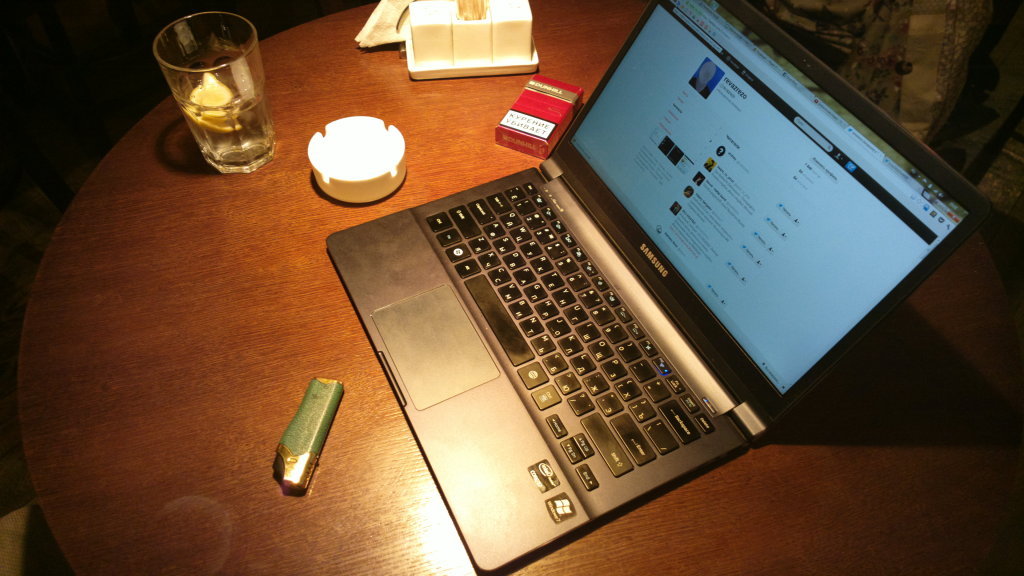
My assumptions were not just justified, using the Samsung 900X3C model for more than a month, I came to the conclusion that from the point of view of both ergonomics and performance, this is currently the best product on the market. And it's not even the fact that it is the lightest (1.16 kg) and the thinnest (12.9 mm) ultrabook. The point is in the nuances, of which there are at least a few.
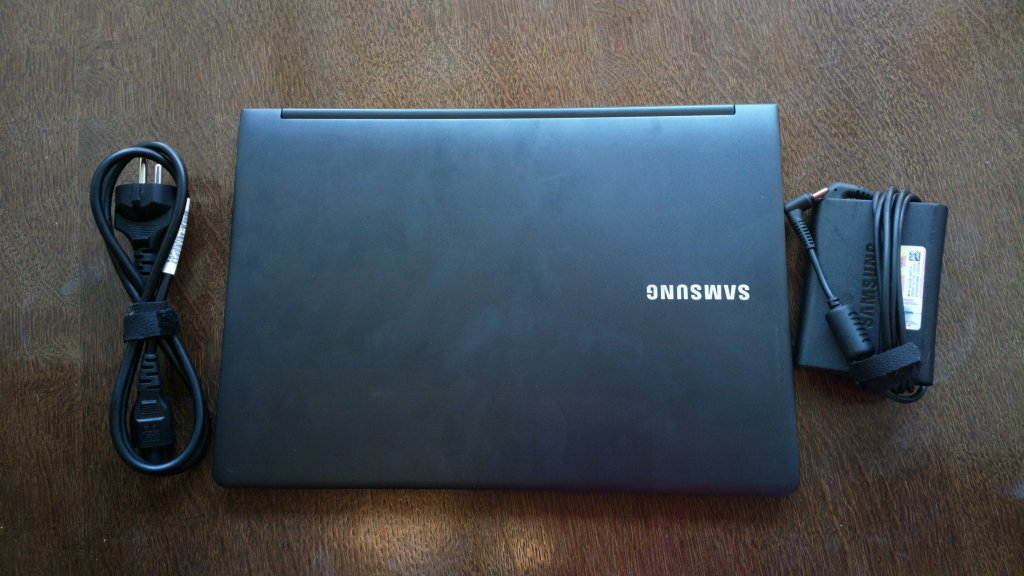
')
I was on the test was the older 13-inch model based on a dual-core processor Ivi Brigle i7. This processor works at a nominal frequency of 1.9 GHz, however, it can be accelerated in turbo mode to 2.4 GHz. RAM in this model 4 GB. The 15-inch model of the new 9th series of RAM already has 8 GB, however, this model is completed with only the i5 processor. The size of the SSD-drive is declared as 256 GB, but only 213 GB of space is available to the user, which, in principle, is also not at all small for an ultra-light and mobile computer.
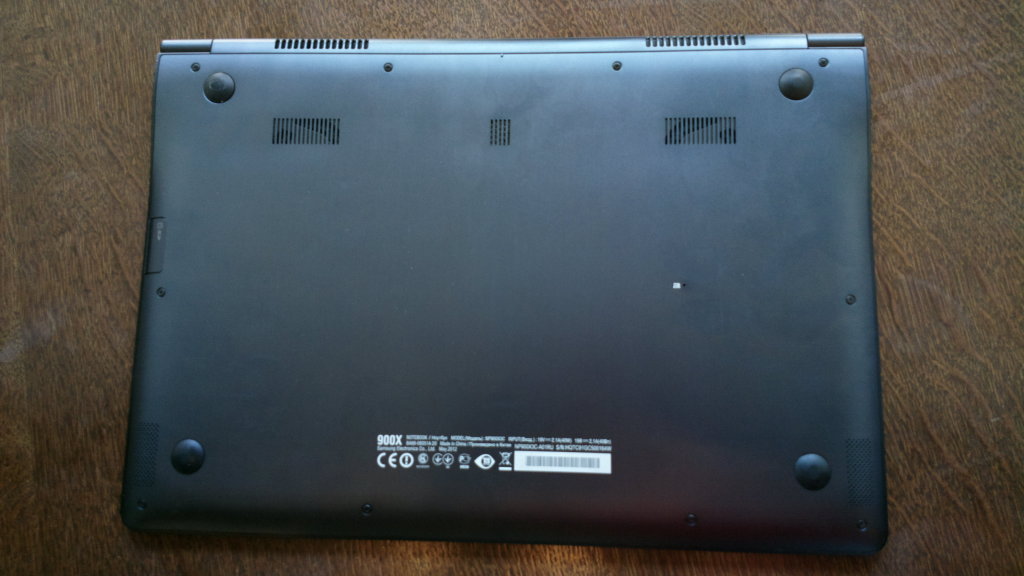
The display, unlike most other laptops and ultrabooks, is not glossy, but matte. And if you consider that its brightness is 400 nits, then in total it gives one hundred percent resistance to any glare. That is, it does not glare at all. Working in the sun is almost as comfortable as with indoor lighting. Viewing angles are huge. That is, for all the testing time, never one of those to whom I showed something on this display, turning to the ultrabook, did not complain that it was hard to see and did not try to correct the viewing angle. This is really impressive!

The technology on which the display is made, developed by Samsung and called PLS. Its main advantages are contrast, depth, color saturation and low power consumption. The resolution of the HD + display (1600x900), which is enough for 13.3 inches.

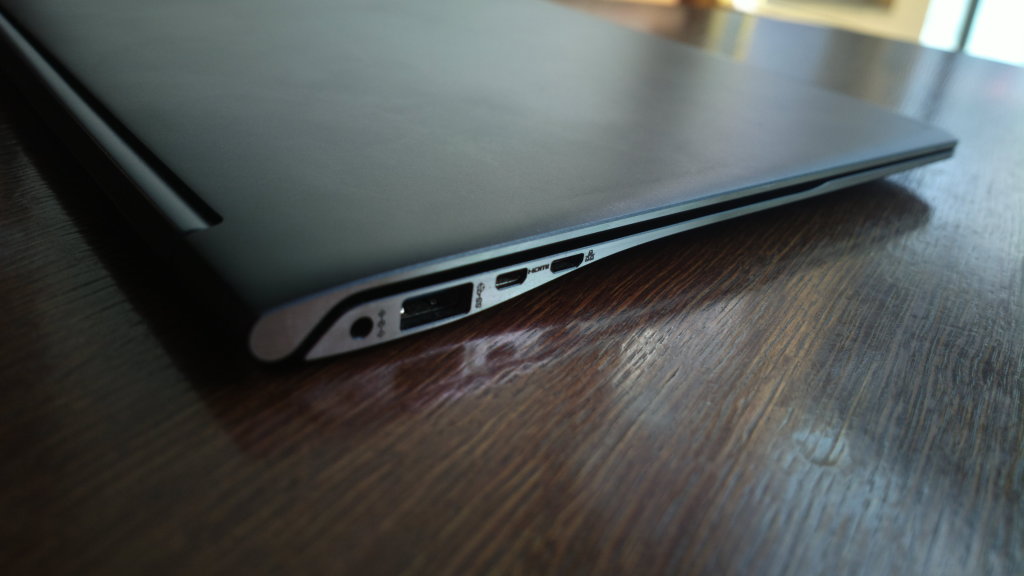
The frame around the display is not wide, but it looks quite sufficient for the hardness of the structure. In the center above the display is a web-camera, shooting video in HD-resolution. But traditionally located near the camera, the light sensor in the models of the new Samsung Nine is in a completely different place: in the upper left corner of the keyboard and system part, above the F1 and F2 keys. What is the logic of such an arrangement of this sensor, I will not undertake to assume, but it adjusts the brightness of the display quite correctly.

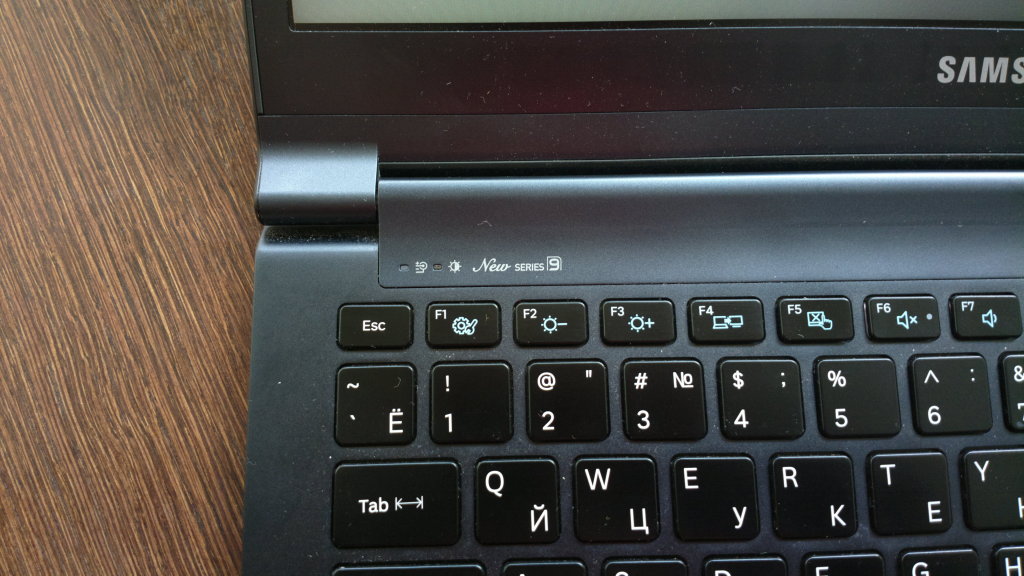
The same sensor is responsible for the backlight of the keyboard, which in the new 9th series, without exaggeration, is a masterpiece. Firstly, the backlight does not glow white, but with a slightly greenish light, which, combined with the dark take off, tinged with sea wave, the body color looks not just harmonious and stylish, but somehow natural, as if it were alive. The way this light works only confirms suspicions about its organic origin. The fact is that, as such, this backlight is not visible. That is, the light hardly makes its way from under the keys, highlighting only the letters engraved on them. As a result, it turns out that the lights seem not to be, and the letters with the same clarity are visible in any light. This is not just beautiful, it is very convenient, it does not tire the eyes, as for example, the keyboard backlighting in many other computers tires, reminding almost a separate display that glows under the arms.
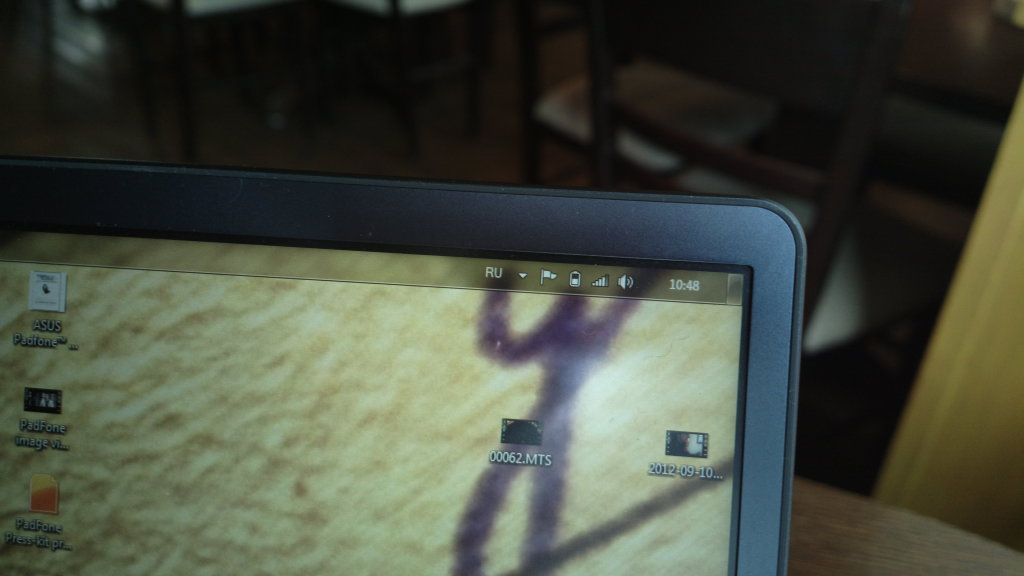
In addition to automatic adjustment by means of a light sensor, the backlight is also regulated by special buttons (Fn + F9, Fn + F10), but this adjustment is only available in the range of four divisions. Personally, from the very beginning, I set it to the maximum, and then I relied on the work of the light sensor and, once again, I was completely delighted with the implementation of the keyboard backlight in the Samsung 900X3C.
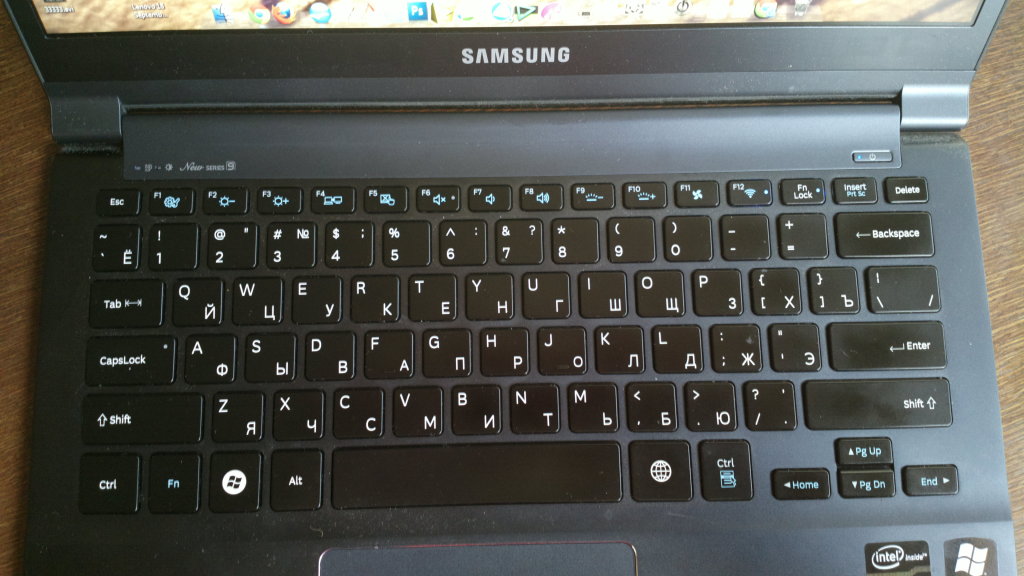

In addition to the main backlight, the four keys (Caps Lock, F6 (off sound), F12 (on / off Wi-Fi) and Fn Lock) have an additional backlight diode, shining bright blue. The on / off button of the notebook itself is located separately from the keyboard and is located above it, in the upper right corner of the keyboard and system part. It is also highlighted by a bright blue light. On the left, at its level, next to the light sensor, is a diode-indicator of charge level. When the battery is charged, it glows green, when charging - red, when running on battery does not glow at all.

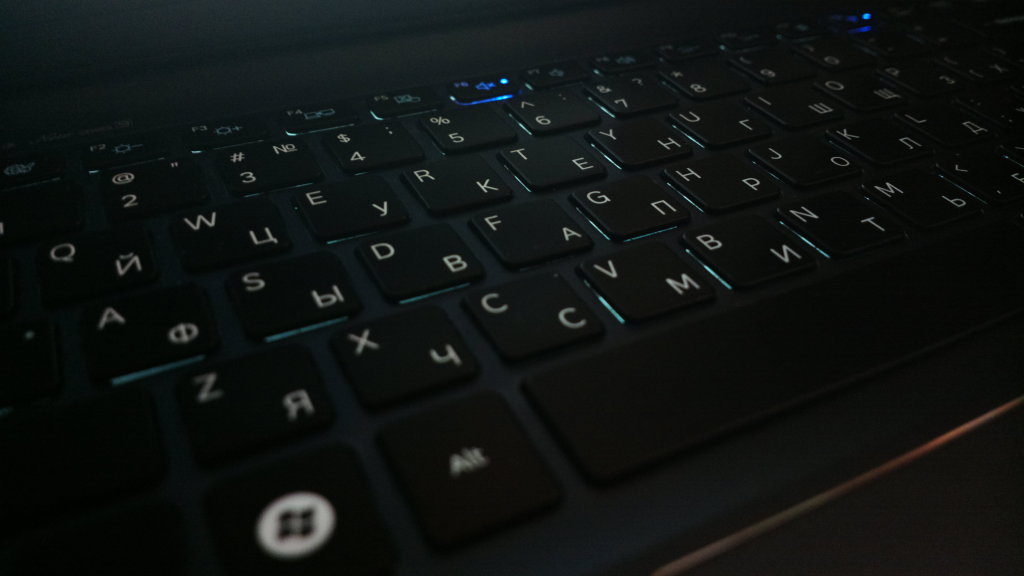
Before turning to the conversation about ergonomic keyboard, I would like to say a few words about mounting the screen to the system-keyboard part of the laptop. The mount is very solid and elastic. For a month of use, no symptoms of loosening were found. The stroke when opening the lid is very smooth and smooth. At the same time the opening angle of the cover-screen is already 170 degrees. Such a large opening angle at ideal viewing angles of the display itself primarily affects the fact that working on a laptop is equally comfortable in any position: even while sitting at the table, even keeping the laptop on your lap, even lying down and opening the lid with the screen to a maximum of 170 degrees. In general, with this ultrabook, the need for a tablet is reduced to zero.

One more thing needs to be said in connection with the disclosure of models of the new ninth series. These models are so balanced that they really open with one finger. It is worth picking up the cover for a small notch in the case in the touchpad area, pull it up and the cover opens smoothly, locking in exactly the place where you will stop making efforts to open it. It is very impressive, I have never seen such an easy and smooth opening in any ultralight laptop.
Well, now you can go back directly to the keyboard itself. To be honest, I'm used to a much tougher keyboard, with more recoil, with keys that are higher. So for the first few days, the Samsung 900X3C keyboard seemed too soft to me. I could not feel how I type on it. It provokes very light and soft touches, almost the same as sensory ones. But then, somehow, suddenly and unexpectedly, I understood, or rather felt that, in fact, you could type on it with exactly the same force as touching the keys, with which I touched the keys on my two previous laptops: Lenovo u165 and Samsung Chromebook. There is no separate stand for the keyboard in the Samsung 900X3C, that is, the keys are inserted directly into the integral top panel of the keyboard and system part of the laptop. And therefore there is no subsidence of the keyboard when typing. As a result, the soft and low-placed keys can be knocked with whatever force you are used to. Another thing is that it in itself really provokes to very soft touches. But I used to drive letters like nails and, I must say, it turned out that it is quite convenient to do this on such a soft keyboard.
The keys themselves are the optimal size. They are definitely not small, but not big either. The distance between the keys also does not cause any complaints. The material from which they are made is quite strong, but easily soiled plastic. Fingerprints remain on the keys from just a few touches. But on the other hand, the owner who loves his device will only arrange for frequent keyboard wiping, which is not bad. However, due to the low fit of the keys, I think, the dust under them will not be clogged as much as in other models.
Another of the pleasant nuances of the keyboard, I would like to note the location of the Insert and Delete keys, which are located exactly above the long Backspace key. Reasonableness and convenience of such an arrangement of these three keys especially begin to feel when editing text. The arrow keys are located in the lower right corner and have a slightly elongated shape, different from other keys. When you press Fn + arrow, these keys start working as Home, End, Ps Up, Pg Dn.

And one more innovation, so to speak. In any case, earlier on the keyboards, nothing like this has ever happened to me. Here, to the right of the space bar there is a special button for switching languages in the keyboard layout. Naturally, the standard Windows keyboard combinations, with the help of which the layout switches, also work here. Moreover, I honestly admit that, out of habit, I use them much more often than the button assigned to this task. However, this option is extremely cute and, I think, sooner or later, the user will get used to it. Switching languages by pressing one button is much faster and more convenient than keyboard shortcuts.
The matte touchpad is very comfortable, slightly to the left of the center. He is a millimeter recessed into the body. Naturally all multitouch gestures are supported. The right and left buttons on it are not highlighted, but they are there, so it’s better to press them in the lower corners of the touchpad.
Consider the end faces of the model. They, in contrast to the deep, matte blue color of the case, are silvery, polished, are the colors of aluminum. On the left side there are: a connector for charging the battery, USB 3.0, miniHDMI and a microUSB connector, which is used to connect an Ethernet adapter included in the kit. On the right are USB 2.0, a dual 3.5 mm microphone and headphone jack, miniDispleyPort, and an external microphone.
About ergonomic characteristics, perhaps, everything. I did not carry out any special tests on the performance of the Samsung 900X3C completely consciously. Because at the moment it is the most powerful ultrabook without tests. Others based on Intel Ivi Brigle processors are simply not available. But instead of testing, I actively used the laptop not only for browsing and text work, but also for video editing, working in Photoshop and layout. Of course, Edius is the best program for editing video on a PC (in any case, I think so - arguments some other time), but, anyway, the speed of work, in particular, the rendered movie rendered me frankly impressed. In this case, the computer is not that it is not heated at all, no, it becomes warm, but hot enough to keep it on my lap would be uncomfortable I could not make it. As for the noise, the new nine does not have it at all. Ventilation is absolutely silent, and the HDD is not here, so there is nothing to be noisy about.
As for the duration of work, it averages about 5 hours, which is the best option for this class of notebooks. The battery is not removable. It charges from 0 to 100% in less than two hours. It is also worth mentioning the charger, which are equipped with a new model of the ninth series of Samsung. At the MacBookAir, the charger will probably be smaller, though not by much, but on the other hand, judging by the power, the Samsung 900X3C is more likely not MacBookAir, but MacBookPro. made up problems. Yes, and she weigh, I think, no more than 200 grams.
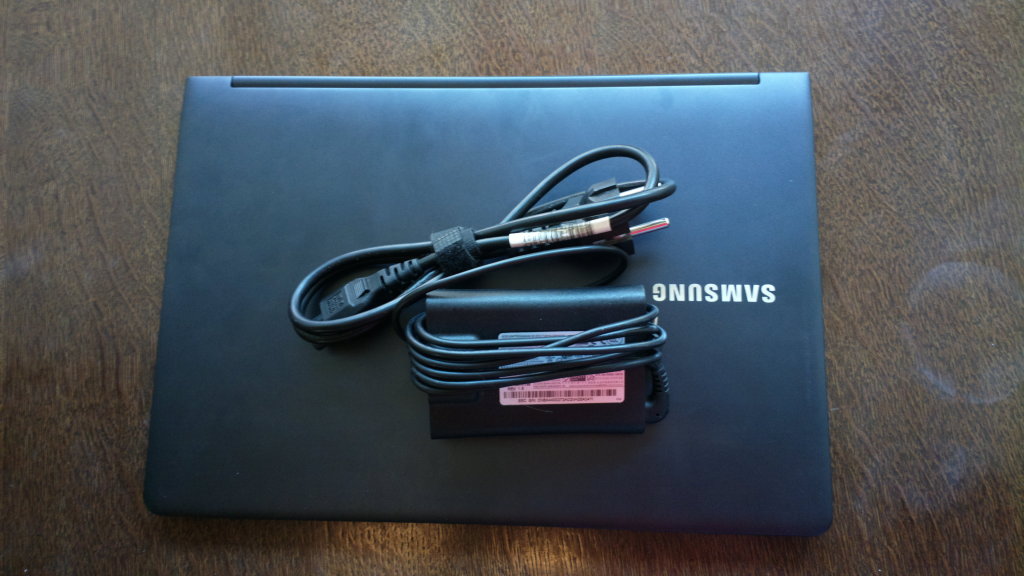
Summing up this review, I want to say that the new 9th series of laptops has greatly changed my attitude towards Samsung. A year ago, I considered Samsung to be the largest and possibly the most important manufacturer of iron in the it-industry, which, almost from the remnants of this iron, is trying to make its own devices. This is my voluntaristic opinion shaken after the appearance of the Galaxy Note on the market, and after the release of laptops of the new 9th series, it became obvious that Samsung has the most important trump card - the ability to learn. Apple doesn’t have this skill, but Samsung has it. The Galaxy Note line, the new 9th series of laptops, and SGSIII, are all the fruits of this, without exaggeration, of great quality, - the ability to learn.
And the Samsung 900X3C is the coveted ultrabook for any user.


My assumptions were not just justified, using the Samsung 900X3C model for more than a month, I came to the conclusion that from the point of view of both ergonomics and performance, this is currently the best product on the market. And it's not even the fact that it is the lightest (1.16 kg) and the thinnest (12.9 mm) ultrabook. The point is in the nuances, of which there are at least a few.

')
I was on the test was the older 13-inch model based on a dual-core processor Ivi Brigle i7. This processor works at a nominal frequency of 1.9 GHz, however, it can be accelerated in turbo mode to 2.4 GHz. RAM in this model 4 GB. The 15-inch model of the new 9th series of RAM already has 8 GB, however, this model is completed with only the i5 processor. The size of the SSD-drive is declared as 256 GB, but only 213 GB of space is available to the user, which, in principle, is also not at all small for an ultra-light and mobile computer.

The display, unlike most other laptops and ultrabooks, is not glossy, but matte. And if you consider that its brightness is 400 nits, then in total it gives one hundred percent resistance to any glare. That is, it does not glare at all. Working in the sun is almost as comfortable as with indoor lighting. Viewing angles are huge. That is, for all the testing time, never one of those to whom I showed something on this display, turning to the ultrabook, did not complain that it was hard to see and did not try to correct the viewing angle. This is really impressive!

The technology on which the display is made, developed by Samsung and called PLS. Its main advantages are contrast, depth, color saturation and low power consumption. The resolution of the HD + display (1600x900), which is enough for 13.3 inches.


The frame around the display is not wide, but it looks quite sufficient for the hardness of the structure. In the center above the display is a web-camera, shooting video in HD-resolution. But traditionally located near the camera, the light sensor in the models of the new Samsung Nine is in a completely different place: in the upper left corner of the keyboard and system part, above the F1 and F2 keys. What is the logic of such an arrangement of this sensor, I will not undertake to assume, but it adjusts the brightness of the display quite correctly.


The same sensor is responsible for the backlight of the keyboard, which in the new 9th series, without exaggeration, is a masterpiece. Firstly, the backlight does not glow white, but with a slightly greenish light, which, combined with the dark take off, tinged with sea wave, the body color looks not just harmonious and stylish, but somehow natural, as if it were alive. The way this light works only confirms suspicions about its organic origin. The fact is that, as such, this backlight is not visible. That is, the light hardly makes its way from under the keys, highlighting only the letters engraved on them. As a result, it turns out that the lights seem not to be, and the letters with the same clarity are visible in any light. This is not just beautiful, it is very convenient, it does not tire the eyes, as for example, the keyboard backlighting in many other computers tires, reminding almost a separate display that glows under the arms.

In addition to automatic adjustment by means of a light sensor, the backlight is also regulated by special buttons (Fn + F9, Fn + F10), but this adjustment is only available in the range of four divisions. Personally, from the very beginning, I set it to the maximum, and then I relied on the work of the light sensor and, once again, I was completely delighted with the implementation of the keyboard backlight in the Samsung 900X3C.


In addition to the main backlight, the four keys (Caps Lock, F6 (off sound), F12 (on / off Wi-Fi) and Fn Lock) have an additional backlight diode, shining bright blue. The on / off button of the notebook itself is located separately from the keyboard and is located above it, in the upper right corner of the keyboard and system part. It is also highlighted by a bright blue light. On the left, at its level, next to the light sensor, is a diode-indicator of charge level. When the battery is charged, it glows green, when charging - red, when running on battery does not glow at all.


Before turning to the conversation about ergonomic keyboard, I would like to say a few words about mounting the screen to the system-keyboard part of the laptop. The mount is very solid and elastic. For a month of use, no symptoms of loosening were found. The stroke when opening the lid is very smooth and smooth. At the same time the opening angle of the cover-screen is already 170 degrees. Such a large opening angle at ideal viewing angles of the display itself primarily affects the fact that working on a laptop is equally comfortable in any position: even while sitting at the table, even keeping the laptop on your lap, even lying down and opening the lid with the screen to a maximum of 170 degrees. In general, with this ultrabook, the need for a tablet is reduced to zero.

One more thing needs to be said in connection with the disclosure of models of the new ninth series. These models are so balanced that they really open with one finger. It is worth picking up the cover for a small notch in the case in the touchpad area, pull it up and the cover opens smoothly, locking in exactly the place where you will stop making efforts to open it. It is very impressive, I have never seen such an easy and smooth opening in any ultralight laptop.
Well, now you can go back directly to the keyboard itself. To be honest, I'm used to a much tougher keyboard, with more recoil, with keys that are higher. So for the first few days, the Samsung 900X3C keyboard seemed too soft to me. I could not feel how I type on it. It provokes very light and soft touches, almost the same as sensory ones. But then, somehow, suddenly and unexpectedly, I understood, or rather felt that, in fact, you could type on it with exactly the same force as touching the keys, with which I touched the keys on my two previous laptops: Lenovo u165 and Samsung Chromebook. There is no separate stand for the keyboard in the Samsung 900X3C, that is, the keys are inserted directly into the integral top panel of the keyboard and system part of the laptop. And therefore there is no subsidence of the keyboard when typing. As a result, the soft and low-placed keys can be knocked with whatever force you are used to. Another thing is that it in itself really provokes to very soft touches. But I used to drive letters like nails and, I must say, it turned out that it is quite convenient to do this on such a soft keyboard.
The keys themselves are the optimal size. They are definitely not small, but not big either. The distance between the keys also does not cause any complaints. The material from which they are made is quite strong, but easily soiled plastic. Fingerprints remain on the keys from just a few touches. But on the other hand, the owner who loves his device will only arrange for frequent keyboard wiping, which is not bad. However, due to the low fit of the keys, I think, the dust under them will not be clogged as much as in other models.
Another of the pleasant nuances of the keyboard, I would like to note the location of the Insert and Delete keys, which are located exactly above the long Backspace key. Reasonableness and convenience of such an arrangement of these three keys especially begin to feel when editing text. The arrow keys are located in the lower right corner and have a slightly elongated shape, different from other keys. When you press Fn + arrow, these keys start working as Home, End, Ps Up, Pg Dn.

And one more innovation, so to speak. In any case, earlier on the keyboards, nothing like this has ever happened to me. Here, to the right of the space bar there is a special button for switching languages in the keyboard layout. Naturally, the standard Windows keyboard combinations, with the help of which the layout switches, also work here. Moreover, I honestly admit that, out of habit, I use them much more often than the button assigned to this task. However, this option is extremely cute and, I think, sooner or later, the user will get used to it. Switching languages by pressing one button is much faster and more convenient than keyboard shortcuts.
The matte touchpad is very comfortable, slightly to the left of the center. He is a millimeter recessed into the body. Naturally all multitouch gestures are supported. The right and left buttons on it are not highlighted, but they are there, so it’s better to press them in the lower corners of the touchpad.
Consider the end faces of the model. They, in contrast to the deep, matte blue color of the case, are silvery, polished, are the colors of aluminum. On the left side there are: a connector for charging the battery, USB 3.0, miniHDMI and a microUSB connector, which is used to connect an Ethernet adapter included in the kit. On the right are USB 2.0, a dual 3.5 mm microphone and headphone jack, miniDispleyPort, and an external microphone.
About ergonomic characteristics, perhaps, everything. I did not carry out any special tests on the performance of the Samsung 900X3C completely consciously. Because at the moment it is the most powerful ultrabook without tests. Others based on Intel Ivi Brigle processors are simply not available. But instead of testing, I actively used the laptop not only for browsing and text work, but also for video editing, working in Photoshop and layout. Of course, Edius is the best program for editing video on a PC (in any case, I think so - arguments some other time), but, anyway, the speed of work, in particular, the rendered movie rendered me frankly impressed. In this case, the computer is not that it is not heated at all, no, it becomes warm, but hot enough to keep it on my lap would be uncomfortable I could not make it. As for the noise, the new nine does not have it at all. Ventilation is absolutely silent, and the HDD is not here, so there is nothing to be noisy about.
As for the duration of work, it averages about 5 hours, which is the best option for this class of notebooks. The battery is not removable. It charges from 0 to 100% in less than two hours. It is also worth mentioning the charger, which are equipped with a new model of the ninth series of Samsung. At the MacBookAir, the charger will probably be smaller, though not by much, but on the other hand, judging by the power, the Samsung 900X3C is more likely not MacBookAir, but MacBookPro. made up problems. Yes, and she weigh, I think, no more than 200 grams.

Summing up this review, I want to say that the new 9th series of laptops has greatly changed my attitude towards Samsung. A year ago, I considered Samsung to be the largest and possibly the most important manufacturer of iron in the it-industry, which, almost from the remnants of this iron, is trying to make its own devices. This is my voluntaristic opinion shaken after the appearance of the Galaxy Note on the market, and after the release of laptops of the new 9th series, it became obvious that Samsung has the most important trump card - the ability to learn. Apple doesn’t have this skill, but Samsung has it. The Galaxy Note line, the new 9th series of laptops, and SGSIII, are all the fruits of this, without exaggeration, of great quality, - the ability to learn.
And the Samsung 900X3C is the coveted ultrabook for any user.

Source: https://habr.com/ru/post/151850/
All Articles